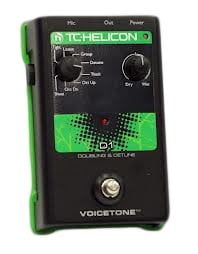
That may be useful for a quick tweak on stage, but the hands-on front-panel editing is already straightforward, helped along by block selection through brushing the cap of the relevant footswitch. The other mode is Pedal Edit, which effectively offers hands-free adjustment of parameters using the footswitches. One is a Looper mode, which assigns looper controls across six footswitches – flexibility that was previously only instantly available if you added external footswitches. When you’ve selected a preset, you can then simply hit the Mode footswitch to enter Stomp Mode where six blocks from the preset are assigned to the main array of six footswitches, all with colour-coded LED rings, mirrored in the ‘Play view’ display, which is divided into six coloured rectangles. In Preset mode, the four presets in a bank are mapped to footswitches A to D and you change banks by using the up/down footswitches. The two main modes we’d most likely gravitate to for practical stage use are Preset and Stomp. In fact, the switching between different modes is really uncomplicated on the XL. It’s a faithful translation that many will find to be a. Here are our top-ranked picks, including top-selling detune pedal. Read honest and unbiased product reviews. Detune’s objective has been to provide a one-to-one emulation of the original hardware, and in this endeavour it's done impressively well. Looking for the best detune pedal We have evaluated 139110 reviews from top experts. These come into play in Snapshot mode (entered by pressing the two up/down arrowed footswitches together) where they are instantly accessible. Find helpful customer reviews and review ratings for TC Helicon VoiceTone D1 Doubling Detune Pedal at. What has changed, though, is that you now get four snapshots instead of three in a preset – a snapshot being a preset within a preset, which can have altered parameters, a different number of active blocks, or a combination of both. It uses basic compression controls to creatively make the reverb pump or just tuck slightly behind a vocal. Wow is a slow detune Shake is a fast detune Speed controls both Wow and Shake speed DUCKER hides the reverb behind the source. The XL has two more presets than the smaller unit, but, apart from those, it’s still the same set. DETUNE adds random pitch modulations to the reverb. On pianos, can provide a sound similar to the.

:) Excellent for when you don't want a 'cyclic/rotating' chorusing effect, but just want to sound bigger and 'wider', on synths/keyboards, vocals, guitars, etc.

This effect finds its way into what I do probably more than almost anything else I own. Granted, it’s probably a little bit harder to tweak the output volume now, but the nature of the pedal pretty much means it would be a set-and-forget control anyway. Last edited by Har on 19th December 2003. This means you can set your volume and push it back into the chassis, so it can’t be accidentally knocked during a gig. Something else that’s migrated to the back panel is the Volume knob, and it’s now spring-loaded.

By contrast, the XL puts all its sockets on the rear panel, meaning those side cheeks could easily butt up against other similarly equipped pedals on your ’board. What’s more, that width difference isn’t quite what it seems, because the smaller HX Stomp had socketry on both sides as well as the rear, so any plugs into those side sockets would increase the footprint.


 0 kommentar(er)
0 kommentar(er)
